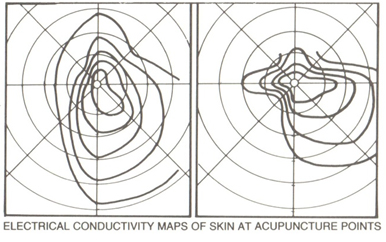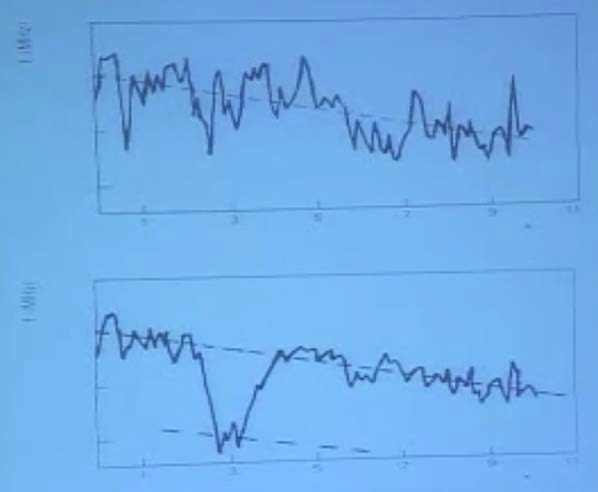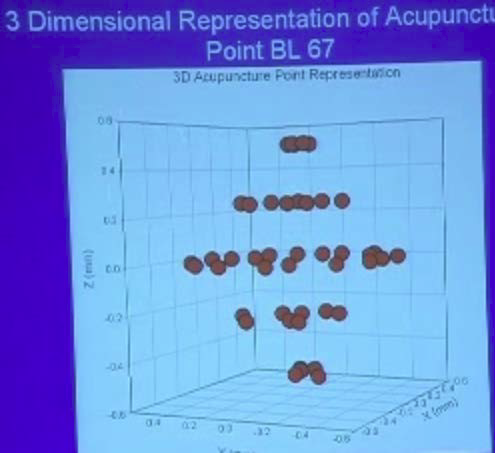Technology is catching up to accupuncture and determining what is actually happening. All this can lead to superior clinical protocols to add to those discovered so far by empirical methods.
More satisfying this is nicely confirming all the speculation produced by the empirical practice and refining it all as well.
Yet this is first steps and as usual funding is sporadic.
Bioelectric Exploration of Acupoints
Posted on November 14, 2015 by sschirott
By Alexander Fournier
https://www.thunderbolts.info/wp/2015/11/14/bioelectric-exploration-of-acupoints/
In 1976, a research team funded by the National Institute of Health comprised of Robert Becker, Maria Reichmanis, Andrew Marino, and Joseph Spadaro published a groundbreaking series of bioelectrical experiments. Becker had been asked by an army colonel from the Surgeon General’s Office to apply contemporary knowledge and tools from biophysics to the study of acupuncture points. With Maria Reichmanis’ mathematical giftedness and their combined ingenuity, the team made quick headway toward this goal, using a specially designed rolling electrode array to examine skin conductivity patterns around the site of acupoints.
The research team observed electrical topography surrounding acupoints and noted as well the coordinated formations of electrical characteristics as shown in the image below, which varied in both strength and size according to a 15-minute rhythm.
Dr. Becker had posited that acupuncture meridians were like electrical conductors carrying certain messages. He reasoned that perhaps acupuncture points serve as boosters for meridians, in much the same way that power lines in the past used line boosters along their length to keep current strength constant. He hypothesized that as an acupuncture needle entered nearby tissue fluids, it might “short out” the booster. Perhaps the application of acupuncture needles to the proper combination of these biological “booster sites” could help alleviate pain messages being sent to the brain and bring surrounding currents into harmony.
The group planned to further their inquiry during the next planned experiment by recording the fields of multiple acupoints along a meridian line while stimulating the acupoint farthest away. That plan was stopped prematurely when the NIH canceled their grant, even though they had published four papers in a year.
Thankfully the more recent work of Joie P. Jones showed the interaction of multiple acupuncture points that Becker and his group were unable to study. However, Dr. Jones et al. in 2004 used a very different approach to imaging acupoints with some similarly intriguing results.
A nationally-sought acoustical imaging scientist, who served as a science advisor to two presidents, Dr. Jones also fit the archetype of the idealized scientist. He made contributions to the NASA Moon and Mars missions, developed innovations to the science of acoustical imaging techniques, and still found time to enjoy fine arts and humanities.
In this later chapter of his life, Dr. Jones met a fellow scientist from the space engineering world, a particle physicist with a penchant for innovation. Dr. Young Kim Bae had led research teams for SRI, Cal-Tech, and others. Like Dr. Jones, Dr. Bae was quite a busy and diverse man. Among his many talents was formal training in acupuncture, including a professional practice.
Utilizing Jones’ foremost expertise in acoustical imaging and Bae’s acupuncture and physics training, these two collaborators wondered if they could use the latest in acoustical imaging knowledge to evaluate – perhaps definitively – whether there are any remarkable electrical or otherwise “energetic” features at the site of acupuncture points?
A team was formed to study this salient question. Their laboratory space at University of California/Irvine would come to house 101 computers with which to process the data from an array of 100 ultrasound transducers. When in use, the 100 transducer array generated 1 terabyte of data for every six seconds of operation.
Over the course of their research, Jones and Bae discovered discrete structures of increased ultrasound attenuation (scattering or absorption of sound waves) at the location of acupoints. Since changes in electrical properties are almost always associated with changes in acoustical properties, the team surmised that acupoints represent regions of enhanced electrical conductivity.
The top graph shows attenuation in normal tissue around acupuncture point. The bottom graph in the same image shows “highly distinguished” attenuation in an acupoint. Readings were done at a depth of 11mm. These structures of acoustical attenuation or conductivity were observed to vary in size, shape, and even location in accordance with regular rhythms.
In a presentation at the Society for Scientific Exploration 2009 conference, Dr. Jones described the process of recording acupoint behavior in real time. His and Dr. Bae’s pioneering findings helped to further the study of the bioelectric nature of acupoints, which carried on the work of Dr. Becker, whose seminal work The Body Electric: Electromagnetism and the Foundation of Life is considered required reading for those interested in the field of electrobiology.
References
Becker, R. O., Reichmanis, M., Marino, A. A., Spadaro, J. A. (1976). Electrophysiological
correlates of acupuncture points and meridians. Psychoenergetic Systems, 1, 105-112.
Cho, H. Z., Chung, S. C., Lee, H. J., Wong, E. K., Min, B. I. (2006). Correction for Cho et al.,
New findings of the correlation between acupoints and corresponding brain cortices using
functional MRI. Proceedings of the National Academy of the Sciences, 103(27).
Jones, J. P., Bae, Y. K., Wilson, L., So, C. S., Kidney, D. D. (2004). Ultrasonic imaging and
characterization of acupuncture points in classical oriental medicine. Acoustical
Imaging, 27, 527-533
Jones, J. P., Bae, Y. K. (2004). Ultrasonic visualization and stimulation of classical oriental
acupuncture points. Medical Acupuncture, 15, 24-26.
Alexander Fournier graduated John F. Kennedy University with a Masters Degree in Integral Psychology – a field specializing in the psychosocial analysis of individuals, groups, and belief systems. He is enthusiastic about resolving cultural misunderstandings between social groups, and helping the human species to become less accustomed to using heuristical/presumptuous reasoning.
He can be reached at friendlyanalyst@gmail.com
See Alexander’s previous Thunderblogs: Electric Biology and Building Solidarity
The ideas expressed in the Thunderblogs do not necessarily express the views of T-Bolts Group Inc or The Thunderbolts




No comments:
Post a Comment